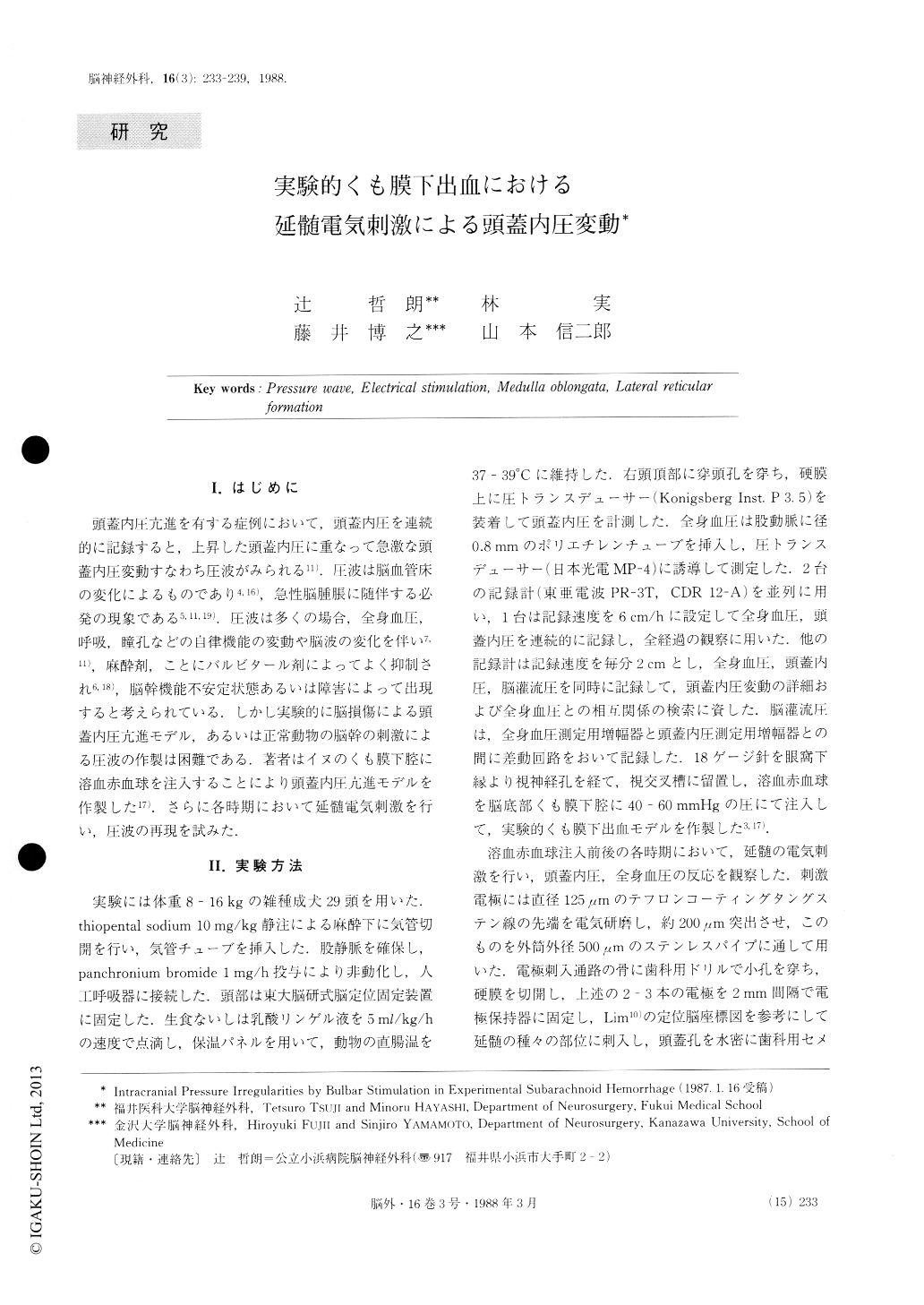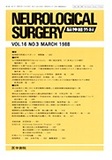Japanese
English
- 有料閲覧
- Abstract 文献概要
- 1ページ目 Look Inside
I.はじめに
頭蓋内圧亢進を有する症例において,頭蓋内圧を連続的に記録すると,上昇した頭蓋内圧に重なって急激な頭蓋内圧変動すなわち圧波がみられる11).圧波は脳血管床の変化によるものであり4,16),急性脳腫脹に随伴する必発の現象である5,11,19).圧波は多くの場合,全身血圧,呼吸,瞳孔などの自律機能の変動や脳波の変化を伴い7,11),麻酔剤,ことにバルビタール剤によってよく抑制され6,18),脳幹機能不安定状態あるいは障害によって出現すると考えられている.しかし実験的に脳損傷による頭蓋内圧亢進モデル,あるいは正常動物の脳幹の刺激による圧波の作製は困難である.著者はイヌのくも膜下腔に溶血赤血球を注入することにより頭蓋内圧亢進モデルを作製した17).さらに各時期において延髄電気刺激を行い,圧波の再現を試みた.
Neurogenic mechanisms of pressure waves were in-vestigated in dogs with acute intracranial hypertension. After subarachnoid infusion of hemolysed red blood cells, simultaneous recordings of both systemic blood pressure (SBP) and intracranial pressure (ICP) were made continuously. Pressure waves could be induced by electrical stimulation of the medulla oblongata at thestage of increased ICP. Induced pressure waves were specific at the site of the stimulation. These pressure waves were classified into 3 types, consisting of fast waves, slow waves and rebound waves.

Copyright © 1988, Igaku-Shoin Ltd. All rights reserved.


